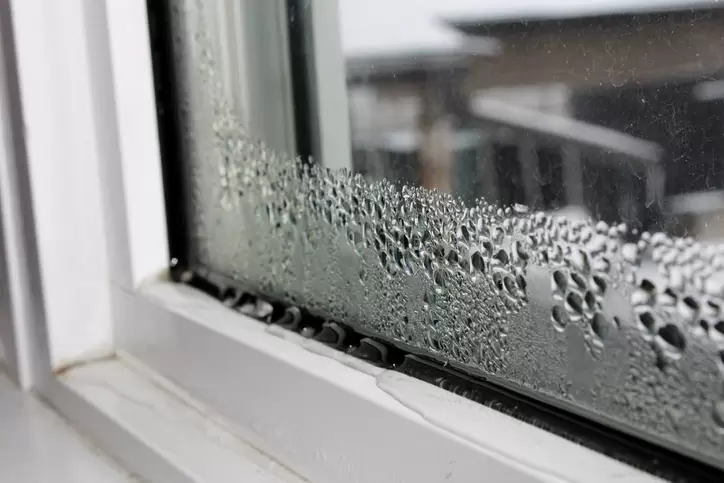5.0 Rated on Google
How Air Conditioners or Dehumidifiers Affect Your Home’s Humidity Levels

Higher humidity is a common issue in many residential homes in the Midwest region. Your humidity levels are directly impacted by the climate you live in, but also by your home’s HVAC system.
It is the HVAC systems job, or more specifically, the air conditioner or dehumidifier job, to regulate the humidity levels within a home. High humidity levels can negatively impact your home’s living conditions and structure in multiple ways, none of which are positive.
Dangers of High Humidity Levels at Home
Higher humidity (above 60%) is okay temporarily, but over long periods of time in a confined space, it will cause problems for humans.
Mold and mildew growth
High humidity levels can lead to the growth of mold and mildew, which is not only nasty but can damage your home’s structure and furnishings, as well as negatively impact indoor air quality. Musty odors and dust mites also become very prominent in environments with high humidity levels. Dust mites are nasty creatures by themselves, but they can also make allergies worse due to the enzymes in their feces and hard shells.
Wood rot
You can also experience wood rot from high humidity levels, the excess moisture in the wood causes it to swell, warp, and eventually rot. This can be even more problematic in areas where the wood is used as a structural component, such as attics, basements, and additions. Condensation on windows, peeling paint, and wallpaper are even more examples of things that can happen as a result of high humidity. Many household items are not meant to be stored at high humidity levels, so when the ranges get out of control, houses start to experience damage.
Overall, high humidity levels can lead to a number of issues in your home, from structural damage to health concerns. Maintaining proper humidity levels is important to ensure a safe and comfortable living environment for you and your family.
If you think your humidity levels are not where they should be, contact Stay Cool Climate Control for a whole home HVAC evaluation by one of our skilled technicians.


